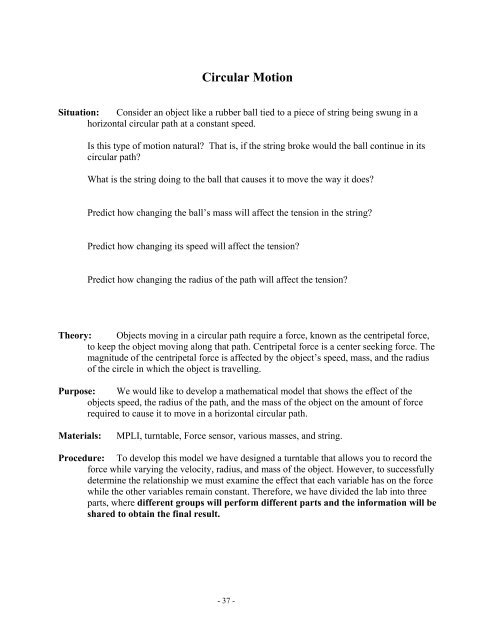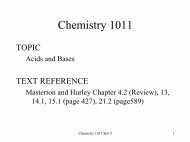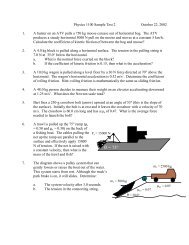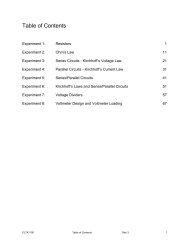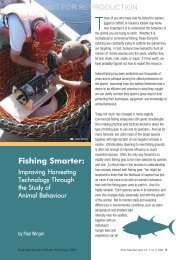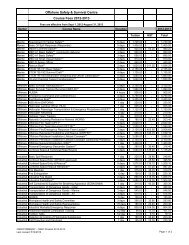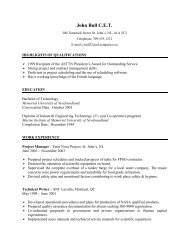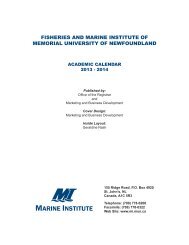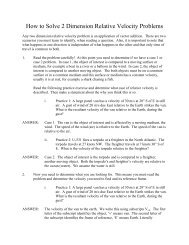Create successful ePaper yourself
Turn your PDF publications into a flip-book with our unique Google optimized e-Paper software.
Circular MotionSituation: Consider an object like a rubber ball tied to a piece of string being swung in ahorizontal circular path at a constant speed.Is this type of motion natural? That is, if the string broke would the ball continue in itscircular path?What is the string doing to the ball that causes it to move the way it does?Predict how changing the ball’s mass will affect the tension in the string?Predict how changing its speed will affect the tension?Predict how changing the radius of the path will affect the tension?Theory: Objects moving in a circular path require a force, known as the centripetal force,to keep the object moving along that path. Centripetal force is a center seeking force. Themagnitude of the centripetal force is affected by the object’s speed, mass, and the radiusof the circle in which the object is travelling.Purpose: We would like to develop a mathematical model that shows the effect of theobjects speed, the radius of the path, and the mass of the object on the amount of forcerequired to cause it to move in a horizontal circular path.Materials:MPLI, turntable, Force sensor, various masses, and string.Procedure: To develop this model we have designed a turntable that allows you to record theforce while varying the velocity, radius, and mass of the object. However, to successfullydetermine the relationship we must examine the effect that each variable has on the forcewhile the other variables remain constant. Therefore, we have divided the lab into threeparts, where different groups will perform different parts and the information will beshared to obtain the final result.- 37 -


